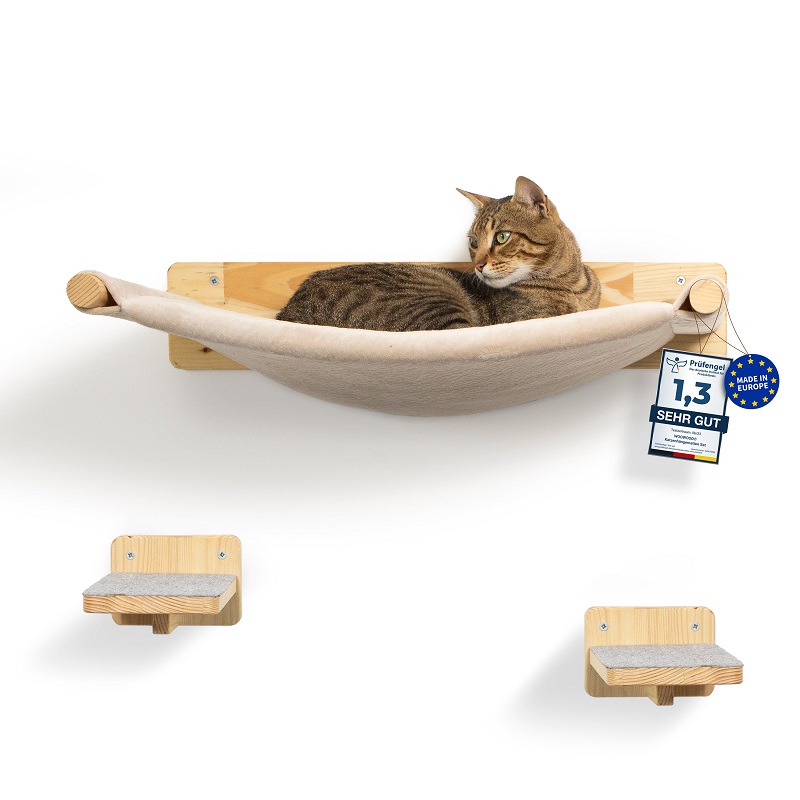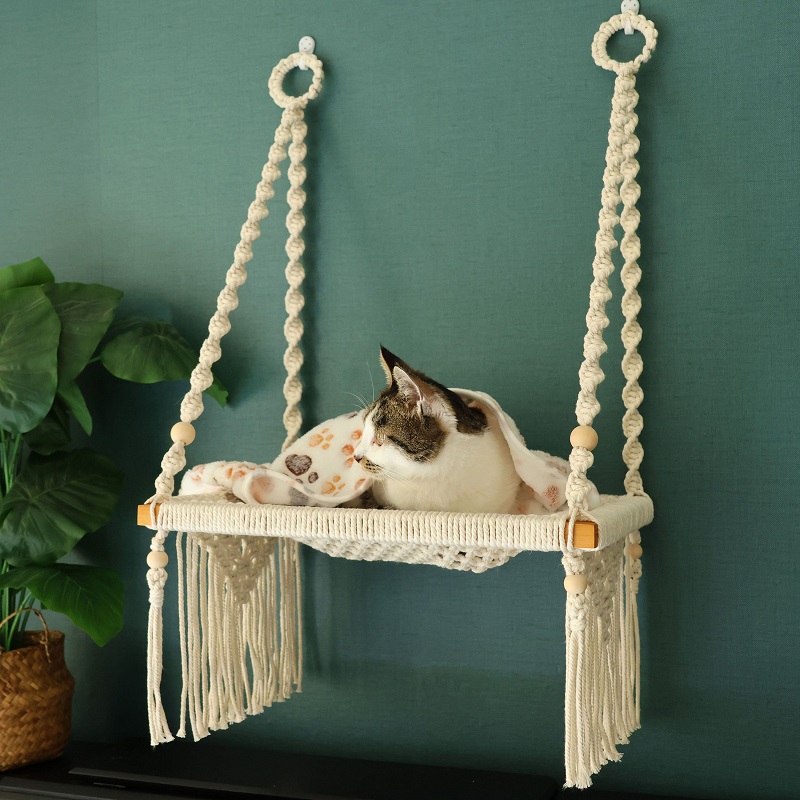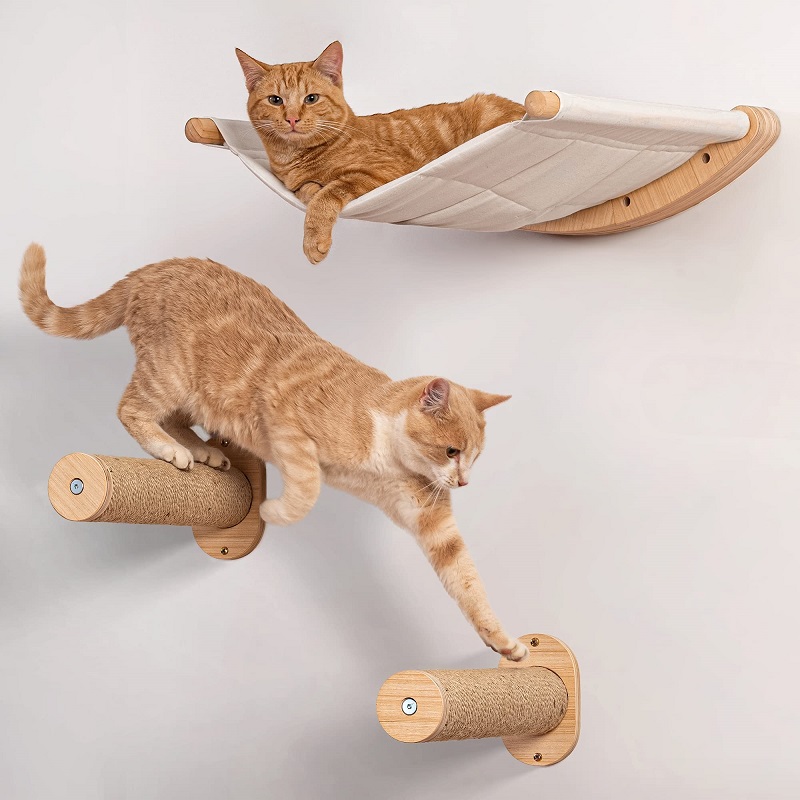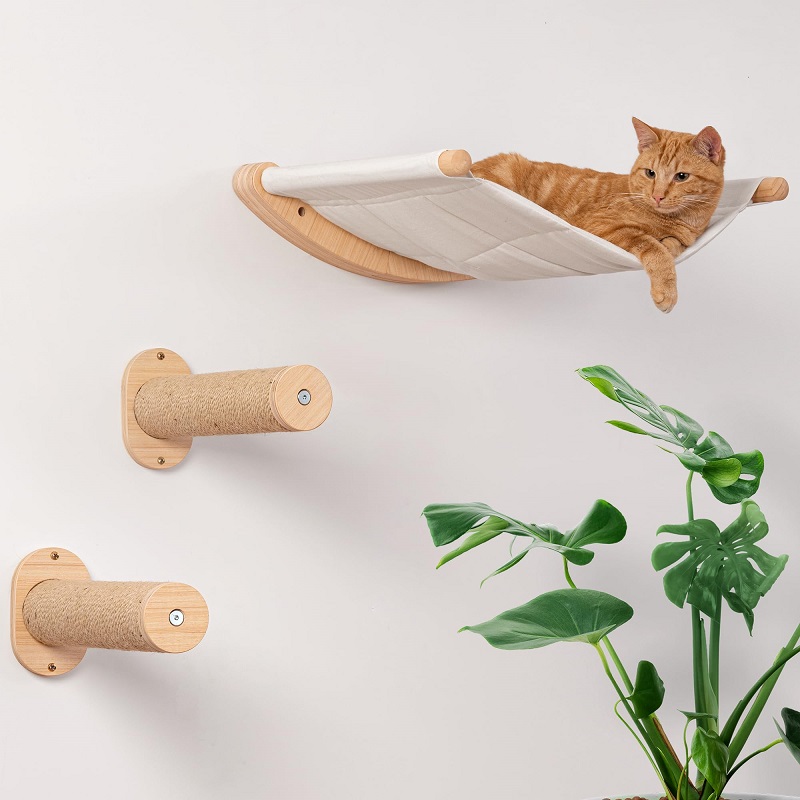Introduction to Cat Hammocks
Why a Cat Hammock?
A cat hammock offers a cozy and elevated resting spot that many felines love. Unlike traditional beds, a hammock allows cats to feel secure and observe their surroundings from a comfortable perch. These hammocks can be placed in various locations, such as near windows, on furniture, or even under shelves, making them versatile and appealing for both cats and their owners. Building your own cat hammock allows for customization in design and material choice, ensuring it perfectly fits your home and your cat’s preferences.
Materials You Will Need
To begin, gather the necessary materials. You will need fabric for the hammock, which can be any durable, comfortable material such as canvas or fleece. Strong, yet flexible, support materials like wooden dowels or metal pipes are essential for constructing the frame. You will also require screws or nails, a drill or screwdriver, and optional decorative elements if you wish to add a personal touch. Make sure to choose materials that are safe for your pet and suitable for your intended design.
Designing Your Cat Hammock
Selecting the Fabric
When choosing fabric for the hammock, consider factors like durability, comfort, and ease of cleaning. Fabrics such as heavy-duty cotton, fleece, or even outdoor upholstery are excellent choices. These materials are resilient and can handle the wear and tear from enthusiastic cat claws. Additionally, fabrics that are easy to clean will save you time and effort in maintaining the hammock’s appearance and hygiene.
Determining Size and Shape
The size and shape of the hammock should be tailored to your cat’s size and your available space. Measure your cat when they are lounging comfortably to gauge the appropriate dimensions. Generally, a hammock that is at least 18 inches by 18 inches will suit most cats. For multiple cats or larger breeds, you might opt for a bigger hammock. The shape can be rectangular, circular, or even triangular, depending on your design preference and the space where the hammock will be placed.

Building the Frame
Choosing the Frame Material
The frame is the structural component that supports the hammock. Wooden dowels or metal pipes are common choices. Wooden frames offer a natural look and can be easily customized with paint or varnish. Metal frames provide durability and a modern aesthetic. Ensure that the frame material you choose is strong enough to support your cat’s weight and any potential jumping or climbing.
Assembling the Frame
Begin by cutting your frame materials to the desired length. Assemble the frame using screws or nails, ensuring all joints are secure and stable. If using wood, pre-drill holes to avoid splitting the wood. For metal frames, welding or using metal connectors can provide a sturdy construction. Once assembled, check for stability by gently shaking the frame. It should be solid without any wobbling or squeaking.
Attaching the Fabric
Preparing the Fabric
Before attaching the fabric, pre-wash and iron it if necessary to avoid shrinkage or wrinkles. Cut the fabric to fit the frame, leaving a bit of extra material to secure it properly. If you’re adding any padding, like foam or quilt batting, cut it to the same size as the fabric.
Securing the Fabric
Lay the fabric over the frame and pull it tight to avoid sagging. You can use a staple gun, upholstery tacks, or even sewing to attach the fabric to the frame. Ensure the fabric is taut and evenly distributed to provide a comfortable and flat surface for your cat. For added security, reinforce the corners and edges with extra fasteners.
Adding Finishing Touches
Enhancing Comfort
To make the hammock even more inviting, consider adding a soft, removable cushion or blanket on top of the fabric. This can be easily washed and replaced as needed. You might also include a few cat toys or a scratching post nearby to make the hammock an even more appealing spot for your feline friend.
Personalizing the Design
Personalizing your cat hammock can involve painting the frame, adding decorative fabric patterns, or even incorporating your cat’s name on the hammock. These finishing touches not only enhance the aesthetic appeal but also create a unique and personalized space for your pet. Use non-toxic, pet-safe materials to ensure your cat’s safety.

Installing the Cat Hammock
Choosing the Location
The placement of the hammock is crucial for your cat’s enjoyment. Choose a location that provides a good view of the surroundings, such as near a window or in a quiet corner. Ensure that the location is safe from potential hazards, such as falling objects or sharp edges.
Securing the Hammock
Mount the frame securely using appropriate anchors or brackets. For wall-mounted hammocks, ensure that you locate studs in the wall to provide adequate support. If you’re placing the hammock on furniture or a stand, check that it is stable and level. Test the hammock’s stability before allowing your cat to use it to ensure it is securely attached.
Maintenance and Care
Regular Cleaning
To keep the hammock clean and hygienic, remove the fabric and wash it according to the manufacturer’s instructions. Vacuum the frame and check for any loose screws or damage regularly. Keeping the hammock clean will ensure it remains a comfortable and inviting spot for your cat.
Checking for Wear and Tear
Inspect the hammock periodically for signs of wear and tear, such as frayed fabric or loose connections. Address any issues promptly to maintain safety and comfort. Replacing worn-out components or reinforcing the structure as needed will help extend the lifespan of the hammock.
Customizing for Multiple Cats
Designing for Multiple Cats
If you have more than one cat, consider designing a hammock that accommodates multiple pets. You can create a larger hammock with additional layers or tiers, allowing several cats to lounge together. Alternatively, you could build separate hammocks that can be mounted close to each other, so each cat has its own space while still being near their feline friends.
Ensuring Stability
When designing for multiple cats, it’s essential to ensure that the frame and attachment points are robust enough to handle the combined weight. Use reinforced materials and secure the frame with extra supports if necessary. Regularly check the stability of the hammock, especially if it’s shared among several cats, to prevent any accidents or discomfort.

Enhancing the Hammock with Accessories
Adding Catnip and Toys
Enhance the appeal of the hammock by adding catnip or hanging toys. Catnip can entice your feline to use the hammock more often, while toys can provide additional stimulation and entertainment. Secure any accessories safely to avoid choking hazards or accidents.
Incorporating a Warm Spot
If you live in a colder climate or your cat enjoys a warm spot, consider adding a heated pad or blanket to the hammock. These can provide extra warmth and comfort, especially during the colder months. Ensure that any heating elements are pet-safe and do not pose a risk of overheating.
Conclusion
Enjoying Your Cat Hammock
Once the cat hammock is complete and installed, observe how your cat interacts with their new space. They will likely appreciate the elevated perch and cozy fabric. Building a cat hammock not only provides your feline with a comfortable resting spot but also adds a touch of homemade charm to your home.
The Ultimate Reward
The ultimate reward of creating a cat hammock is seeing your pet happy and content in their new favorite spot. The satisfaction of crafting something with your own hands and knowing that it contributes to your cat’s comfort and enjoyment is truly fulfilling. Enjoy the process and cherish the joy it brings to your furry friend.
